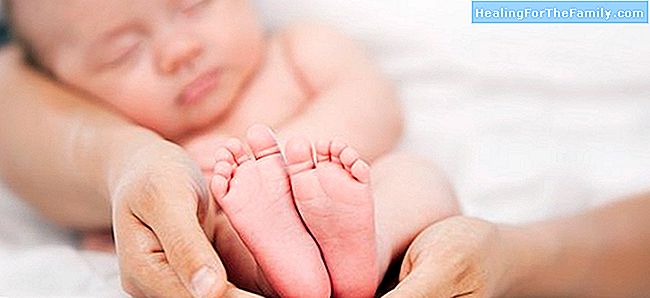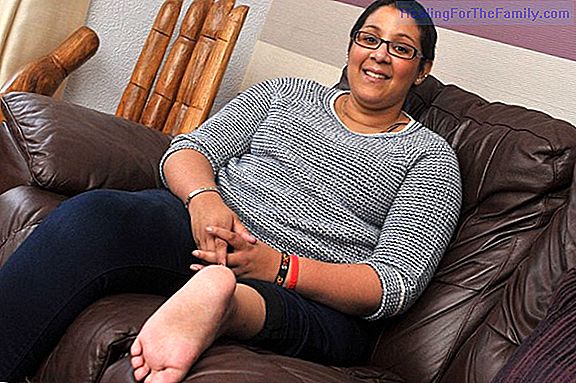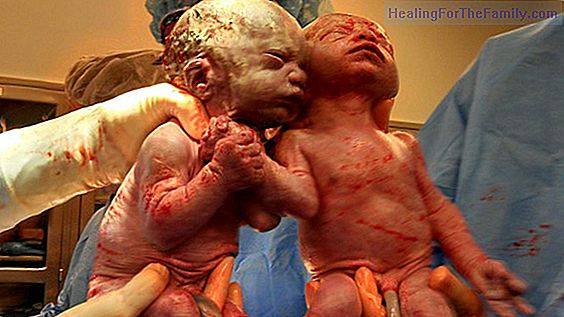The evolution of babies' feet
The adult's foot consists of 26 bones, 107 ligaments and 19 muscles, which support us and allow us to walk throughout our lives. In adulthood many adults often have foot problems, sometimes derived from alterations in early childhood and this is why we must take care of children's feet. As J.R. Ebri
The adult's foot consists of 26 bones, 107 ligaments and 19 muscles, which support us and allow us to walk throughout our lives. In adulthood many adults often have foot problems, sometimes derived from alterations in early childhood and this is why we must take care of children's feet. As J.R. Ebri (specialist in Traumatology and Orthopedics of the Valencian Institute of Child Orthopedics) it is important to distinguish between malpositions and malformations, and assess the flexibility and associated problems that may exist.
How are babies' feet?

The baby's foot is rounded, with a layer of fat that does not reveal the plantar arch in the first months of life. At birth, the foot usually measures about 7.5 cm (40% of adult size), a year measured over 12 cm, increasing 10 cm in the following 5 years, reaching 10 years to have 90% of its final size in girls and 85% in boys.
During the first months of life, the feet have many sensitive receptors, and they serve babies to process information. The article 'Preventive Podiatry: Barefoot Children Equal to Smarter Children', written by Isabel Gentil García, Professor at the University School of the Complutense University of Madrid, recommends leaving barefoot children who are not yet walking, as the movement and the Sensory stimulation through the bare feet is a factor of maturational stimulation, proprioceptive development and intellectual development of the child.
As of the third month of life, there is an interest in one's own body (which will be the first thing the child explores). At that moment the baby begins to look at his hands and begins to discover his body. 'The image of oneself that the child constructs (that is to say, his identity) has its origin in his tactile, kinesthetic and visual sensations resulting from the child's relationship with the world,' says the article. The child plays with his feet and hands and that stimulates his development, because it allows the maturation of the nervous system and favors neuromuscular control, intellectual development and social skills.
During the first 8 or 9 months of life, the baby uses his feet to learn about the outside world: he touches everything he has at hand, manipulates them and puts them in his mouth. Before starting to walk, the baby needs the information he received from the soles of the feet and from the deep structures (the joints) in order to coordinate the movements and achieve balance. That is why we should not diminish the sensitivity of the feet by putting them on, since they inform of the external world, transmitting sensations of temperature and textures that favor the development of the child. At this stage there is perhaps no need to wear footwear, if we want to avoid cold feet we can use booties or thick socks to allow the mobility of the feet.
Developmental problems in the feet of babies
Pediatricians usually assess whether relatives have worn special shoes, orthoses, have had calluses. Hypermobility signs should be measured, the gait observed, other joints explored, the sole of the foot evaluated in the podoscope, the child standing on tiptoe. A footprint can be made with a calco-tampon. Radiography is not necessary in all cases, a good clinical examination by an experienced specialist may be sufficient.
One of the most frequent problems in children that worries parents a lot is flat foot. If it is flexible and reducible it is not necessary to do x-rays, and it can be physiological up to 4 years, being accentuated by overweight and hyperlaxity. A low, flexible footwear with an internal buttress must be used to improve walking and biomechanical loading.
Massages on the feet of babies
When examining the foot of the newborn and infant, we must be especially careful, as in many cases early treatment, for example with massage, can prevent the need to wear prosthesis or even perform surgery. The massages should be soft, progressive, favoring the laxity of the joints, and the use of splints depends on the professionals and their experience.
The massage to babies should be a moment of pleasure for the baby and the adult, if the child does not feel comfortable it is better to stop the massage. It is recommended to use oils. Moving the baby's fingers, massaging the plant with the knuckles, making circles on the sole of the foot, or around the ankle can stimulate the baby's feet and also relax them.












